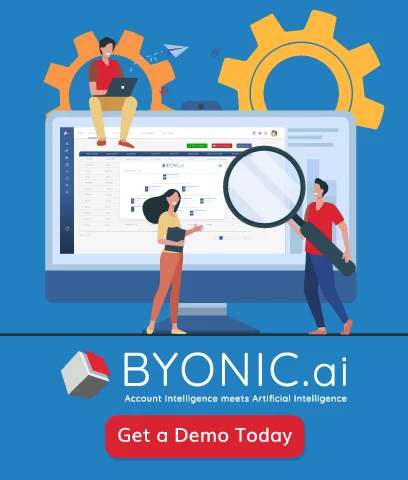
The AI Mirage: When Hype Meets Harsh Reality
Artificial intelligence has been hailed as the engine of digital transformation, but beneath the headlines, a sobering truth has emerged: most AI projects don’t succeed. In 2025, the failure rate has reached staggering new heights, with 42% of businesses scrapping the majority of their AI initiatives (Source: Pwrteams, 2025). That’s a dramatic leap from just 17% six months prior. The question is no longer whether AI can change the world—but why it so often fails to deliver.
Leadership Blind Spots: When Vision and Reality Collide
One of the most common reasons AI projects collapse is a disconnect between business leaders and technical teams. According to a RAND Corporation report (Source: RAND, 2025), projects often falter because executives misunderstand the real problem AI is supposed to solve, set unrealistic expectations, or chase the latest technology trend without a clear business case. The result? Solutions that optimize the wrong metrics or don’t fit into actual workflows.
Takeaway:
Open communication and a shared vision between business and technical teams are essential for AI success.
Data Dilemmas: Garbage In, Failure Out
AI’s potential is only as strong as its data. Biased, incomplete, or poor-quality data can doom even the most advanced models. For example, facial recognition systems have shown error rates exceeding 30% for dark-skinned female faces, a direct result of non-representative training datasets (Source: LinkedIn, 2025). In healthcare, AI trained mostly on data from white patients has led to inaccurate diagnoses for minority groups (Source: AIMultiple, 2025).
Data drift—when real-world data evolves beyond what the model was trained on—can also quickly undermine accuracy, especially in fast-changing sectors like finance or social media.
Technical Pitfalls: Underfitting, Overfitting, and the Limits of Learning
Many AI failures are rooted in models that are either too simplistic (underfitting) or too narrowly focused (overfitting). Think of a chatbot that can’t handle varied user intent, or a medical AI that fails outside its original hospital setting.
Transfer learning—applying a model trained in one context to another—often falls short when the underlying data distributions differ.
The Causality Trap: When Correlation Isn’t Enough
AI is great at finding patterns, but it often confuses correlation with causation. This can have dangerous consequences in high-stakes domains:
- Predictive policing: AI may reinforce biased policing by sending more patrols to already over-policed neighborhoods, creating a feedback loop.
- Credit scoring: Models might deny loans based on zip codes with higher historical default rates, perpetuating systemic inequality.
Without true causal understanding, AI risks amplifying existing biases and making unjust decisions.
The Hidden Costs: Infrastructure and Budget Blowouts
AI isn’t just about clever algorithms—it demands robust infrastructure and serious investment. Gartner estimates that building or fine-tuning a custom generative AI model can cost between $5 million and $20 million, with ongoing user fees reaching up to $21,000 per user per year. Many organizations underestimate these costs, leading to underfunded projects and ultimately, abandoned deployments.
The Human Factor: Adoption, Trust, and Change Management
Even when AI works technically, getting teams to use it is another challenge. Resistance to change, lack of trust, and fears of job loss all contribute to low adoption rates. Despite the hype, the percentage of employees consistently using AI tools like Copilot remains surprisingly low.
Shiny Object Syndrome: Tech for Tech’s Sake
Chasing the latest AI trend without a clear business objective is a recipe for disaster. As the RAND report (Source: RAND, 2025) stresses, successful projects are laser-focused on solving real problems, not just implementing the newest algorithms. Organizations that prioritize technology over impact often end up with tools that don’t fit their needs.
The Hard Truth: Some Problems Are Just Too Complex
Some challenges remain too ambiguous, context-dependent, or nuanced for even the most advanced AI. Overestimating what AI can achieve leads to disappointment and wasted resources.
Turning Failure into Success: Lessons for the AI Future
1. Align Leadership and Technical Teams Around Real, Enduring Business Problems
Successful AI initiatives begin with a clear understanding of the business challenges that need to be addressed. It is crucial for leadership and technical teams to collaborate closely to identify and prioritize these problems. This alignment ensures that AI projects are not just technologically driven but are also strategically relevant to the organization’s goals.
Identify Core Issues: Leadership should articulate the key business problems that AI can solve, such as improving customer experience, reducing operational costs, or enhancing decision-making processes.
Collaborative Workshops: Conduct workshops that bring together leaders from various departments and technical teams to brainstorm and discuss the most pressing challenges. This collaborative approach fosters a shared vision and encourages buy-in from all stakeholders.
Continuous Feedback Loop: Establish a feedback mechanism where technical teams can provide insights on the feasibility of proposed solutions, and leadership can adjust priorities based on evolving business needs. This iterative process helps maintain focus on enduring problems rather than transient trends.
2. Invest in High-Quality, Representative Data and Ongoing Model Monitoring
Data is the backbone of any AI project. Investing in high-quality, representative data is essential for building effective AI models. Additionally, ongoing monitoring of these models ensures they remain accurate and relevant over time.
Data Quality Assurance: Implement rigorous data collection and cleaning processes to ensure that the data used for training AI models is accurate, complete, and free from biases. This may involve using automated tools for data validation and employing data scientists to oversee the quality.
Diversity in Data: Ensure that the data represents a diverse range of scenarios and demographics to avoid biases that could lead to skewed results. This is particularly important in applications like hiring algorithms or customer service chatbots. Model Monitoring and Maintenance: After deployment, continuously monitor AI models for performance and accuracy. Set up alerts for any significant deviations in model predictions and establish a routine for retraining models with new data to adapt to changing conditions.
3. Build Robust Infrastructure and Budget for the Full Lifecycle of AI Projects
AI projects require a solid infrastructure to support data processing, model training, and deployment. Additionally, budgeting for the entire lifecycle of AI initiatives—from conception to maintenance—is critical for long-term success.
Infrastructure Investment: Invest in scalable cloud computing resources, data storage solutions, and tools for data processing and analysis. This infrastructure should be flexible enough to accommodate future growth and changes in technology.
Lifecycle Budgeting: Create a comprehensive budget that includes not only initial development costs but also ongoing expenses for maintenance, updates, and scaling. This budget should account for personnel, technology, and any necessary training.
Cross-Functional Collaboration: Encourage collaboration between IT, data science, and business units to ensure that the infrastructure meets the needs of all stakeholders. This collaboration can help identify potential bottlenecks and streamline processes.
4. Prioritize User Adoption Through Training, Transparency, and Trust-Building
For AI solutions to be effective, user adoption is essential. Prioritizing training, transparency, and trust-building can significantly enhance user engagement and satisfaction.
Comprehensive Training Programs: Develop training programs tailored to different user groups, ensuring that all employees understand how to use AI tools effectively. This training should cover both technical aspects and practical applications relevant to their roles.
Transparent Communication: Maintain open lines of communication about how AI systems work, their benefits, and any limitations. Transparency helps demystify AI and reduces resistance from users who may fear job displacement or lack understanding.
Building Trust: Foster a culture of trust by involving users in the development process, soliciting their feedback, and addressing their concerns. When users feel valued and heard, they are more likely to embrace AI solutions.
5. Stay Grounded—Focus on Measurable Impact, Not Just Innovation for Its Own Sake
While innovation is a key driver of AI initiatives, it is essential to remain focused on measurable outcomes that align with business objectives.
Define Success Metrics: Establish clear, quantifiable metrics to evaluate the success of AI projects. These metrics should be tied to business goals, such as increased revenue, reduced costs, or improved customer satisfaction.
Regular Impact Assessments: Conduct regular assessments to measure the impact of AI initiatives against the defined metrics. This assessment should include both quantitative data and qualitative feedback from users and stakeholders.
Iterative Improvement: Use the insights gained from impact assessments to refine and improve AI solutions continuously. This iterative approach ensures that the focus remains on delivering real value rather than pursuing innovation for its own sake.
By adhering to the principles enlisted above, organizations can turn potential failures into successes, ensuring that their AI initiatives are not only innovative but also impactful and aligned with their strategic goals.
Conclusion: From AI Hype to Real-World Value
AI’s promise is enormous, but so are its pitfalls. By learning from the root causes of failure—leadership misalignment, data quality, technical limitations, cost, and adoption—organizations can turn the AI mirage into measurable value. The future of AI belongs to those who combine technical excellence with strategic clarity, ethical rigor, and a relentless focus on real-world impact.




